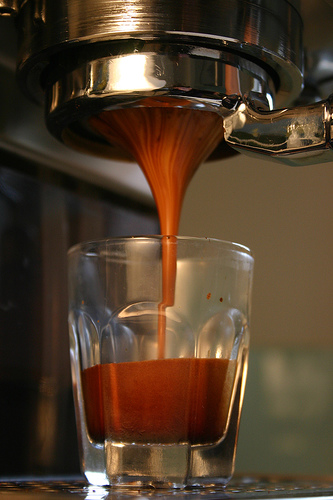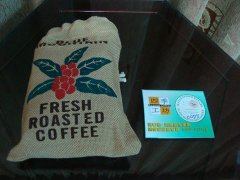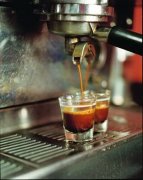Taste espresso

History of espresso machines
The history of commercial espresso machines in coffee books is unified into the piston pump invented by Gaggia in 1948. In the past 60 years, the large appearance and principle of espresso machines have basically not changed much. It's a bit of a pity, but the original exposed E61 brewing port is no longer popular. I personally like very classical copper machines, but scaling and copper rust are unavoidable problems. Modern medium-and high-grade machines, such as conti and starbucks's special machine La Marzocco, often use aluminum alloy boilers. The conti is a French machine, and it has been used as a special machine by coffee beanery. If you want to buy E61 machines, it seems that some brands such as faema are still for sale, and even manual piston machines can be found, but there is no guarantee of pressure. Speaking of manual motors, it always reminds me that the earliest movie cameras were also hand-shaked. at that time, many photographers shook very fast as soon as they took tense shots, and as a result, everyone on the screen moved madly, and sometimes they would shake very slowly when they encountered calm and beautiful lenses, so rocking film was a technical job at that time. It is the same now, if the pressure is not enough, crema will not come out.
Gaggia is still producing espresso machines today, but all aspects of technology have lagged behind, and the quality has also declined, which really makes people feel that time flies.
Beans commonly used in espresso
We know that coffee beans are generally divided into Arabica and Robusta, the former is usually more advanced, the latter is promoted because the latter is easy to feed, like weeds with strong vitality. The former is not only usually raised at high elevations, but also vulnerable to insect pests.
Robusta is usually the main ingredient of instant coffee, but some robusta is sometimes added to espresso beans because robusta is easier to make crema, such as Lavazza's grand espresso, which is a mixture of 60% Arabica and 40% Robusta.
Espresso coffee beans are usually blended beans because they are a more balanced way of brewing coffee. Due to the toxicity of starbucks, acidic espresso has been considered to be a problematic taste in the mouth of Shanghainese. Of course, slightly acidic espresso is not a popular taste because there are too many uncontrolled factors and the demand for brista can be very high.
For every brand, espresso's bean blend is a trade secret, not as scary as the formula to protect Coca-Cola, but it is also an important part. In the case of illy or lavazza, which we are familiar with, the former is 100% Arabica in memory, while the latter has several different recipes. As mentioned earlier, Robusta is mainly used for cost control and makes it easier to make Crema, but it increases the caffeine content of espresso to a considerable extent, and such a formula is not recommended unless you have a special hobby.
Many domestic bakers produce individual varieties of beans, generally speaking, Brazilian beans and Yemeni mocha beans are more suitable for the use of single espresso, but due to the purchase channels, baking level, especially for the selection of bad beans, it limits the level of domestic manufacturers in providing espresso beans.
Espresso commonly used temperature: 90.5C
Forgetting who measured this temperature may be the result of a long trial, just like traditional Chinese medicine, rituals and experience all play a role. If the temperature is lower than this, espresso will become sour, while higher will be bitter. This is not fooling people casually. For a while, the temperature of my coffee machine dropped to more than 80 degrees, and the aftertaste of the espresso became very astringent. I thought it was the bean problem. Later, I used the temperature to measure the water temperature to find out the problem.
But 90.5 degrees is not a standard value, a senior brista will understand that air pressure and other factors can also affect coffee, high altitude areas will increase a small temperature to match coffee beans, and French filter pot coffee making, the temperature will often be as high as 95 degrees. So don't trust coffee drinkers who spread the temperature as if it were a Bible.
Important Notice :
前街咖啡 FrontStreet Coffee has moved to new addredd:
FrontStreet Coffee Address: 315,Donghua East Road,GuangZhou
Tel:020 38364473
- Prev

Taste the classic Blue Mountain Coffee (Blue Mountain)
Blue Mountain Coffee is the best coffee in the world. The Blue Mountains are located in the eastern part of the island of Jamaica, hence its name because it is surrounded by the Caribbean Sea. On clear days, the sun shines directly on the blue sea, and the peaks reflect the bright blue light of the sea. The highest peak of the Blue Mountains is 2256 meters above sea level. It is the highest peak in the Caribbean and a famous tourist attraction.
- Next

Identify the quality of ESPRESSO
ESPRESSO quality coffee, what is it? A drink, a carrier of taste, a way to feel the details of life. When you are in a cafe to enjoy a cup of coffee packaged by various cultures, have you ever thought about and learned to identify whether you are drinking a perfect cup of coffee, rather than spending dozens of yuan but washing pot water, so that you always feel
Related
- How did the Salvadoran coffee industry develop in Central America?
- What exactly does the golden cup extraction of coffee mean?
- The Origin of Coffee flower
- [2023 Starbucks World Earth Day] there are more meaningful things besides free Starbucks coffee!
- What kind of coffee is there in Spain? 9 Flavors of Spanish Coffee
- Aromatic African coffee| Kenya's coffee culture and historical production area
- Liberica Coffee Bean knowledge: the characteristics of Liberian Coffee beans of the three original species of Coffee beans
- The origin and formula of Spanish latte introduces the taste characteristics of Bombon coffee in Valencia, Spain.
- How to adjust the solution of over-extracted coffee
- What is the tasting period of coffee beans? What is the period of coffee and beans? How should coffee wake up and raise beans?

